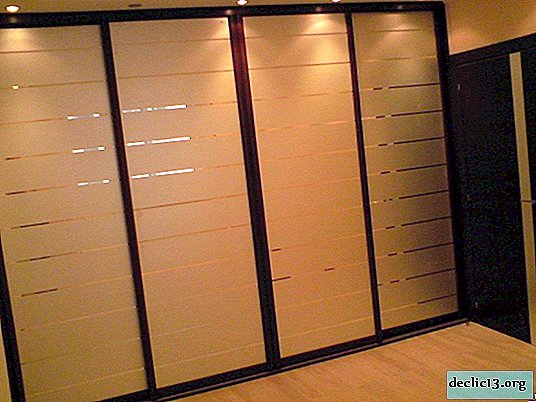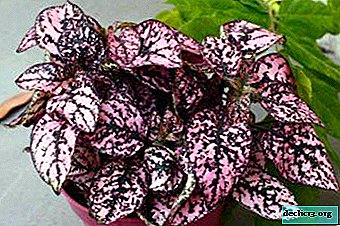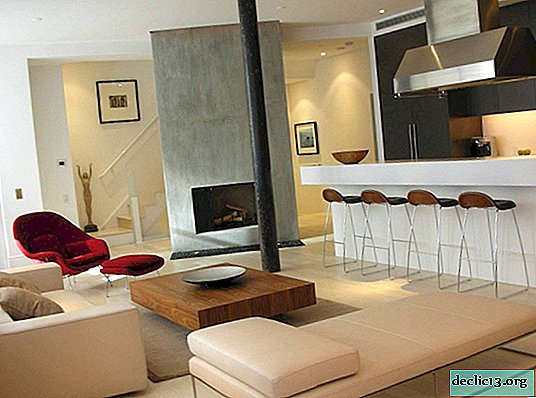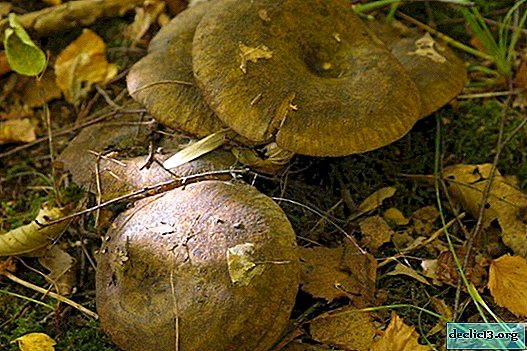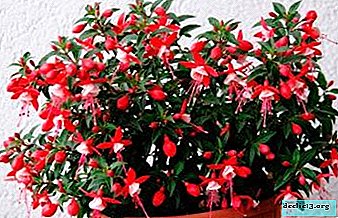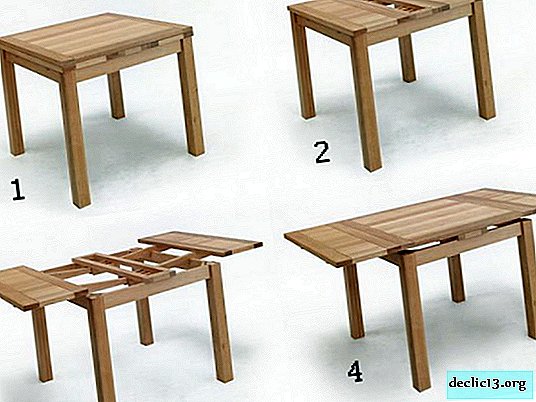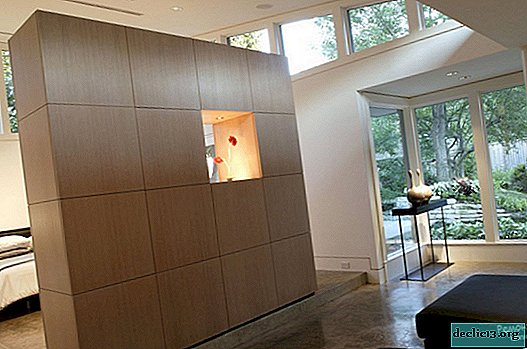Garden Design: A Kaleidoscope of Budget Ideas
Many of our compatriots, with the phrase “summer cottage”, involuntarily have a picture with an infinite number of tomato and cucumber beds, an old barn for inventory and a gazebo inherited from previous owners of the land. Meanwhile, modern resources and magazines beckon us with beautiful photos of landscape design projects, where the design of every centimeter of the house territory or garden is thought out to the smallest detail. The Russian landowner (even the tiniest site) also wants to see his territory as beautiful, well-groomed, alluring greenery and the opportunity to relax in the shade in the fresh air. But at the same time, we are not ready to give up beds with greens, we are not ready to pick ripe vegetables right for a family dinner. Is it possible to combine the practical benefits of growing vegetables, fruit trees and greens with the beauty of landscape design? Of course, even on a tiny piece of land, nestled between the fences of private houses in the narrow city streets, you can create your own green oasis for outdoor recreation. It will be necessary to make efforts, but the task is quite feasible. We hope that an impressive selection of projects created in the most diverse territorial conditions will help you get inspired on the exploits in your own garden or in a personal plot.
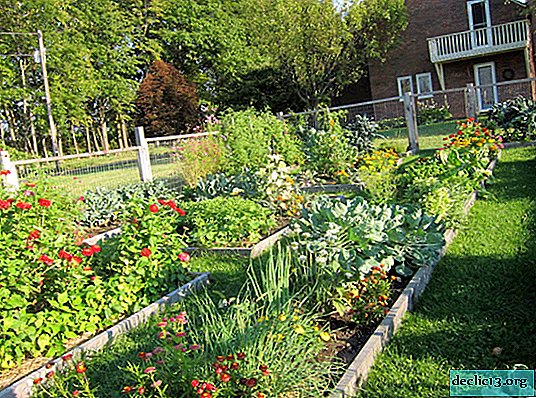

We make a detailed plan
Regardless of whether you possess a tiny piece of land near your city dwelling or are the happy owner of a huge plot outside the city, the first thing you need to start with is to create a garden of your dreams - making a detailed plan. Of course, the initial plan is not a dogma carved in stone, it can be changed in small things, but the main points should be clearly written. Without a concrete plan of what exactly you want to see on your site, you can waste time, money and effort. It is important for someone to be able to admire flowering flower beds and sit in the shade of fruit trees, others are more interested in growing vegetables and the ability to fry meat on fire in their own courtyard or any other local area.




On paper or in a special program, place the main objects of your site - buildings, recreation areas, a cooking area on fire, a dining area, a playground, a greenhouse or a greenhouse, a gazebo or a canopy. It all depends on your preference and the size of the site. Next, you need to mark the location of flower beds and planting trees. Depending on the passage of groundwater, the location of the site in relation to the cardinal points and landscape features, choose tree planting already at the planning stage. The same applies to flower beds, beds - it is better to know in advance which plants (sun-loving or prefer shady and humid terrain) you will plant in them. It is better to spend time at the initial stage than to face the need to transplant or completely cut down already grown plants that simply do not have enough sun.




Next, you will need to outline the location of garden paths. These are not easy elements of landscape design that help owners get from one sector of the site to another. Paths help to zone the site, distribute functional segments and create orderliness of the layout of the territory. Not to mention the fact that getting from one corner of the plot to the other in slushy weather without properly designed tracks is extremely difficult.



Depending on the budget for the landscape design of your site, its size, the availability of buildings and material for their execution, garden paths can be laid out:
- stone (plate);
- pebbles;
- fine gravel;
- brick;
- paving stones;
- paving slabs;
- concrete slabs;
- a tree.




Many summer residents may decide that laying out garden paths is a waste of time and money. Indeed, many have their childhood memories of their grandmother’s garden, where there were no stone or brick paths, and the potatoes grew excellent. But garden paths are not only the aesthetic appearance of your site, but also safety, weed control, zoning of segments with different crops.



Garden paths made of stone look solid and respectable. Of course, the cost of the material can scare the Russian gardener, but such paths will last a long time. If you still have natural stone from buildings, facade cladding or erection of a fence, then stone garden paths are your option.




Owners of sites on which there are buildings made of bricks can not even puzzle over the choice of material for the execution of tracks. Paving bricks are cheaper than building bricks and can serve longer as a flooring for walking. Well, a harmonious appearance to your garden is guaranteed.



One of the cheapest options for organizing safe movement around the site is bulk gravel. The only thing that needs to be taken into account is that consumables will need more than usual, because gravel gives decent shrinkage during operation. And yet, for a large area with a central alley, gravel is not very suitable, it is ideal for small paths between flower beds and beds.




Another fairly durable option for organizing garden paths is the use of concrete products. With the help of ready-made concrete slabs or blanks for pouring, you can create paths of any shape and size, waved and straight, wide and narrow. In construction stores, you will see many options for filling shapes - from round, triangular and polyhedrons to asymmetric products. You can not just lay out the track, but create your own, absolutely unique picture.



Of course, the material for laying out garden paths can be combined. For example, the borders of paths (like low borders) can be laid out with stone or brick, and the main part is covered with gravel. Thus, the boundaries of the paths will be clear, and money saved. If you put large pebbles as a base or concrete slabs, and around them tamp small gravel, you get a practical and beautiful garden path.



If we talk about the location of beds in the territory in front of the house or garden, then globally you have two options - the use of dug or raised beds. Dug out beds can be fenced with stones. Bricks, wooden boards - so your flower beds will get a clear border and additional protection against weeds.





Raised beds are very popular in the yards of Europeans. These garden receptions began to be actively used among our compatriots. The raised flowerbed can be fenced with boards, stones, brick or any improvised material. It all depends on your budget and expectations regarding the life of the facilities - whether you want to use them only for the season or the products should last longer.




There are ready-made vessels for the formation of beds on sale. As a rule, they are presented in round or oval shapes and are made of thin sheets of stainless steel. This is a practical, relatively inexpensive and aesthetic way of organizing beds or flower beds for planting plants even in conditions that are far from the possibility of growing greens and vegetables in the open ground.



Even a small area can be decorated with elements that do not take up much space. A beautiful arch or pergola can serve not only as a decoration of your landscape, but also as a support for climbing plants.




Examples of organizing a "green corner" in urban settings
Among the city noise and bustle, the abundance of glass and concrete, the lack of contact with nature is especially acute. The desire to get a small green oasis among gray concrete slabs pushes many citizens even to build a greenhouse on the roof of an apartment building. Nothing is impossible. You can also organize a place to relax in the fresh air on two square meters of land or a terrace. If you do not forget about the possibility of growing fresh herbs to the table in small raised beds or even garden tubs, you can get not only a patio, but also a mini-garden right in the middle of the urban concrete jungle.




Even on the roof of the house you can organize a cozy green patio for spending time in the fresh air, including weeding the beds or cutting a small lawn. Of course, no one talks about planting fruit trees (even dwarf varieties) in huge tubs, but small flower beds or beds with greens can be literally organized "from scratch."


For the organization of beds or small flower beds on the roof, terrace or just a modest piece of land, bulk (raised) flower beds are best suited. They can be built using stone, wooden boards (you can use pallets or pallets left over from building materials) or improvised materials (tin sheets, old barrels).



A “living” or green wall is an opportunity to organize a corner for rest in the shade of plants for those who have absolutely no place to land in the soil. Of course, creating and maintaining a vertical flowerbed with plants is not an easy task, requiring more time and effort than a regular flower garden. But an incredibly beautiful, stylish and original construction with its appearance will pay off all investments.






